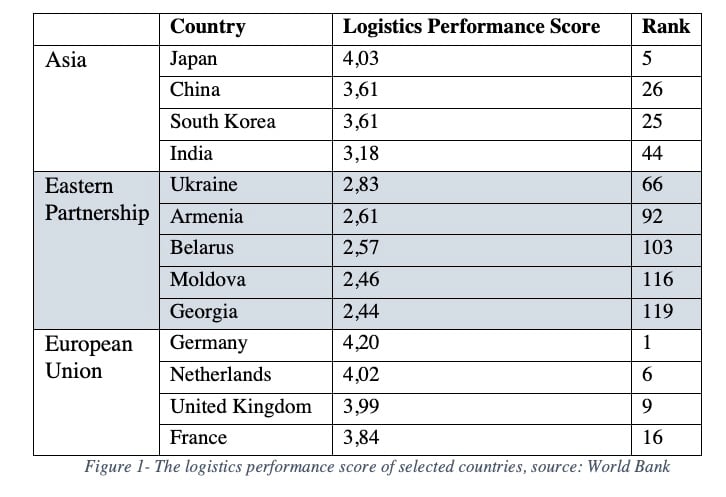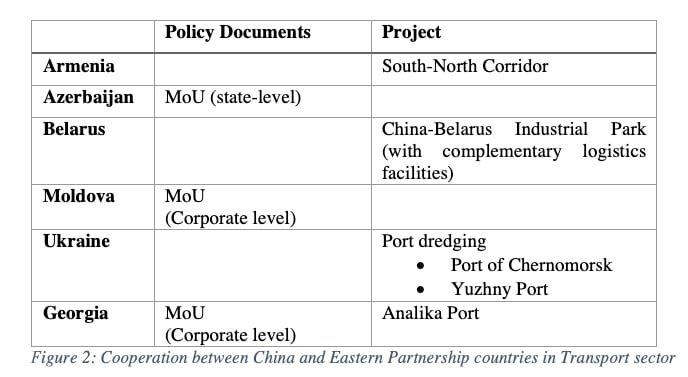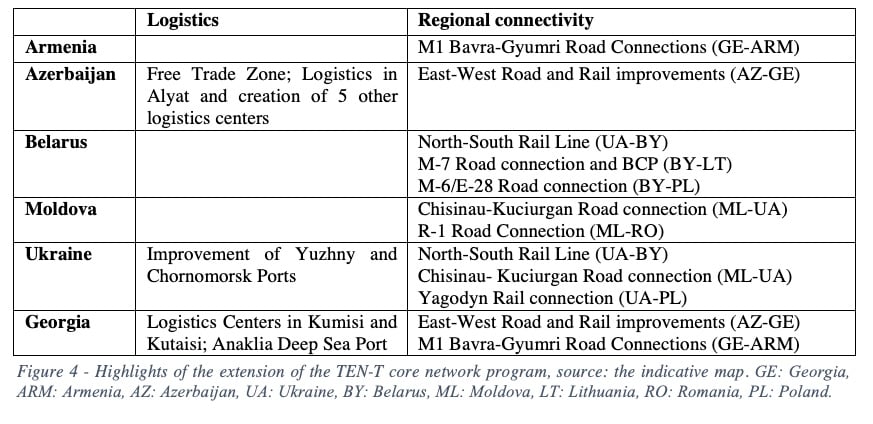
On June 6th, the European Council published a joint declaration entitled Eastern Partnership-taking the transport cooperation agenda forward. This latest declaration reconfirmed the parties’ commitment to furthering cooperation on transport, addressing mainly the construction of new infrastructure, road safety, and the sustainability of transport.
Established in 2009, the Eastern Partnership is a joint policy initiative between the EU and six neighboring countries, namely Armenia, Azerbaijan, Belarus, Georgia, Moldova, and Ukraine. It addresses governance, economy, trade, and mobility issues.
Boosting Eurasian continental cooperation
As suggested in the joint declaration, the Eastern Partner Countries, as a part of the TEN-T policy, are very important to the EU-Asia cooperation. Asia is one of the EU's main trading partner. Among the top 10 EU trading partners in 2018, 4 are Asian countries: China, Japan, South Korea, and India. Together they account for 23.7% of all non-EU trade. As for the top 20 non-EU trading partners, nearly half of them are Asian countries.
So far, the logistics of the trade between the EU-Asia is dominated by maritime shipping. However, multimodal transport, connecting land and water, has been in the limelight in the past few years. This technique consists in combining the low transport cost of maritime shipping with the fast shipping times of railway transport.
Unfortunately, the asymmetrical development of the transport and logistics infrastructure on the Eurasian continent is an obstacle to the development of multimodal transport. According to the 2018 logistics performance index published by the World Bank, 8 out of the 10 countries with the highest performance scores for logistics are EU member states, and the two remaining ones are Asian countries. In contrast, the Eastern Partnership countries’ rankings are fairly low. Out of the 155 countries listed, Ukraine has the highest ranking at no. 66, and Georgia the lowest at 119 (figure 1). The asymmetrical development of the transport sector in the Eurasian continent will be a bottleneck in building smoother land connections between the EU and Asia.

In an effort to remove the bottleneck in the logistics chain, the EU has initiated multiple projects under the partnership’s framework. The connectivity section focuses on the TEN-T system and sustainability in the transport industry. As for progress, according to an evaluation report issued in 2018, the extension of the TEN-T network is currently on track, while the progress of transport sustainability remains moderate.
For the future infrastructure projects, according to the latest TEN-T Investment Action Plan for the Eastern Partnership countries, the emphasis is on the construction of roads, railways, and logistics centers (figure 3). The funding mainly comes from the international financial organizations, such as the European Bank for Reconstruction and Development and the World Bank, Public-Private Partnerships, as well as other external grants. It contains almost 100 projects, and amounts to an investment of €13 billion until 2030, with an expected result of 4,800 kilometers of new road and rail, 6 renovated ports, and 11 logistics centers, to be completed by 2030.
Of course, fostering cooperation is not just a matter of infrastructure, it must be couple with good governance, which will contribute to the reduction of red tape in the administrative process, and help implement projects more efficiently. As good governance is also a big focus in this partnership, it would certainly improve the overall logistics performances of the parties involved.
Not just the EU
Certainly, the EU is not the only international power eying this area. The Chinese Belt and Road Initiative (BRI) is invested in the region as well. When it comes to transport, BRI investments generally focus on multi-modal transport. For example, China invested in the Port of Piraeus, with a connection to the Hungary-Serbia Railway project, currently under construction, with the project of achieving a railway-water shipping connection from China to Europe.
In comparison to some of the Chinese mega investment in Europe, Chinese involvement in the transport sector in Eurasia seems a bit modest. Among the six countries in the Eastern Partnership, only Azerbaijan has a state-level Memorandum of understanding (MoU) on transport with China, but no actual project is underway. Chinese-backed projects in the transport industry can be found in Ukraine, Georgia, and Armenia. The other countries have only received Chinese investment in the industrial and energy sectors. But investment in these sectors may be the first step before developing complementary logistics infrastructures, which is what happened for the China-Belarus Industrial Park.
If we take a close look at the projects, there are overlaps between the BRI and TEN-T, such as the improvement of the Yuzhny Port and Port of Chernomorsk in Ukraine, Anaklia Port in Georgia as well as the South-North Corridor in Armenia. It may indicate some common interest and potential collaboration in developing these areas.

But we should keep in mind the giant at the table: Russia, who has a substantial influence over this area, both geopolitically and economically. Russia has initiated a rival regional organization called the Eurasia Economic Union, although not all the Eastern Partnership countries are members of this organization. On June 14th, Russia, China, Belarus, and Armenia signed an agreement lowering tariff and facilitating customer clearance processes to help trade and shipping in this area.
Having multiple players interested in this region has a twofold impact: firstly, it gives the region the opportunity to develop their infrastructure, thereby enabling a better EU-Asia land connection; but these countries’ divergent interests, as well as the complex geopolitical factors in the area will make the development of logistic capabilities uncertain.


Ganyi Zhang
PhD in Political Science
Our latest articles
-
3 min 08/01/2026Lire l'article
-
Subscriber France: Road transport prices remain stagnant in November
Lire l'article -
Container shipping in 2025
Lire l'article


